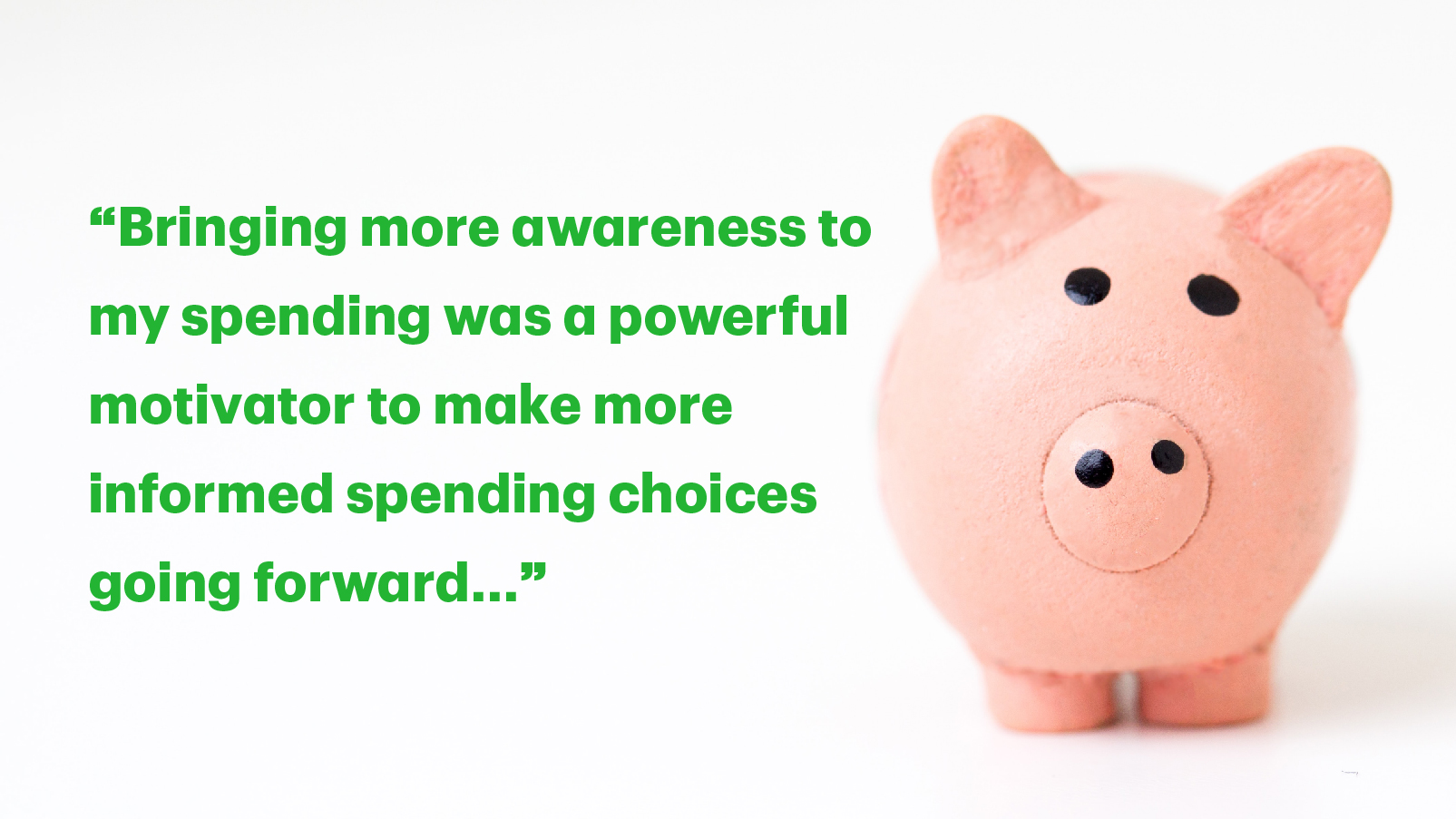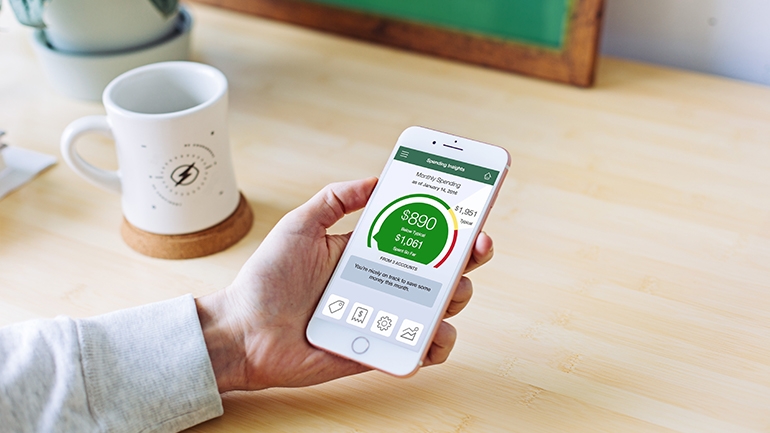By Robin Taub, financial writer and speaker
Taub was commissioned by TD to try TD MySpend and write about her experience.
Where is my money really going? It's a question I've often asked myself. And to finally answer it, I spent the last two months using TD MySpend, an app that automatically tracks and categorizes your spending from your eligible TD bank and credit card accounts. This real-time spend tracking app allows you to monitor categories based on "needs" such as groceries, home expenses, health, utilities and transportation, as well as "wants" such as shopping, travel, dining out and entertainment.
After using the app for two months I learned a few things about how I spend and save my money. Maybe you'll see some of yourself reflected in these lessons. Here's what I learned about my habits:
The numbers don't lie
You may think you know how and where you spend your money, but seeing it totaled by category is a great reality check.
I opted to receive daily notifications which allowed me to review my spending from the previous day, and how much I spent in total (compared to my usual daily spend), as well as the amounts by vendor and category. It also painted a bigger picture by displaying how much I spent in a category within a month and compared that number to my spending for the previous month. I realized I was spending more on dining out than I assumed, but less than I thought on groceries. The app also enables you to compare your current spending in a day to your monthly average (or view month by month averages if enough time has passed).
I became a more mindful spender
The app lets you set real-time alerts every time there's a transaction in certain categories. Every time I spent money, whether by debit or credit card, I would receive a notification on my phone (and my iPhone watch). This made “virtual" spending feel “real," and assign more value to purchases I made as though I was paying with cold, hard cash. I also had a few daily and category spending spikes, but they were a result of expensive, non-recurring purchases of prescription eye glasses and a new mattress.
Bringing more awareness to my spending was a powerful motivator to make more informed spending choices going forward, like comparison shopping or just walking away. I also received alerts when family members who were authorized to make transactions on the accounts and credit cards linked to the app, did so.

If you find the notifications are disruptive, distracting or are causing information overload, you can always turn them off in the app's Preferences settings. But a 2019 research study by NYU Stern School of Business (about how app users manage their personal finances when sent overspending messages), has shown that these technological nudges lead to a decline in spending. App users who received messages are estimated to spend C$8.15 less, or 5.35% of daily average spending, mostly in the "wants" category of shopping.
Budgeting became way less work
The app securely connects to my eligible TD accounts, so I didn't have to enter any transactions manually – which had been a key reason for not using budgeting apps in the past.
WATCH: How digital banking is helping this influencer find her financial work-life balance
The app categorized most transactions in the category that made personal sense for me, but when it didn't, it was easy to make the adjustment and have future transactions applied to the category I selected. You can also set spending targets (essentially budgets), which are particularly helpful for categories where you tend to overspend. Certain features in the app, like 'Spending History by Month,' helped me identify months of heavy spending and then let me drill down on which categories were causing it (easily identified because categories of overspending are shown in red and underspending in green).
I found ways to save
Tracking my spending helped me discover the “low hanging fruit" categories where I was wasting money on wants, like shopping or dining out, or spending a lot on needs, such as utilities. By cutting back or eliminating unnecessary spending (like buying too much prepared food) and being more careful about when I consume electricity, I was able save more towards the financial goals that matter to me.
Categories are key
The part of me who likes to keep my spending in check loved having categories to further break down my spending. Once I saw how useful the breakout was to me, I began to crave further detail. I would have liked the ability to add sub-categories or custom categories to some of the broader categories. For example, a category for personal care or grooming, or the ability to separate home maintenance from home supplies would have been great for the level of detail that I like but there are likely others who prefer to keep it simpler.
I spent money on the things I value
Health and wellness are very important to me, and it's reflected in my spending on gym memberships (that I actually use.) Culture is something else I really value, and expenditures on museum memberships, theatre and concert tickets felt like money well-spent.
Although my experiment is over, and I now have a much better idea about where my money goes, I plan to keep using the app to track and monitor my spending. I'll also use the real-time alerts to help stay on top of my finances because they’ve helped me adjust my spending habits.
